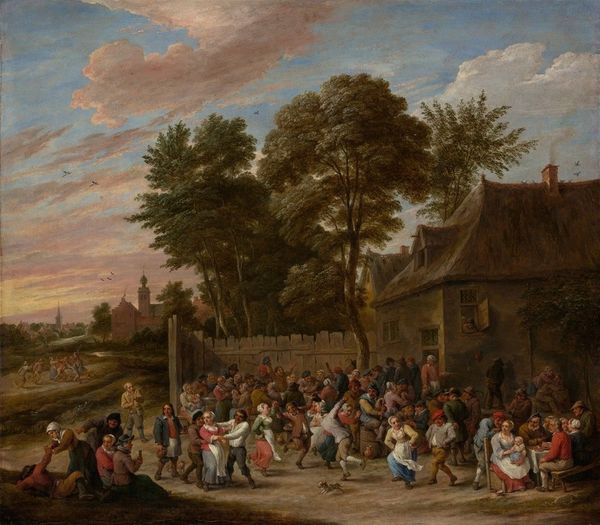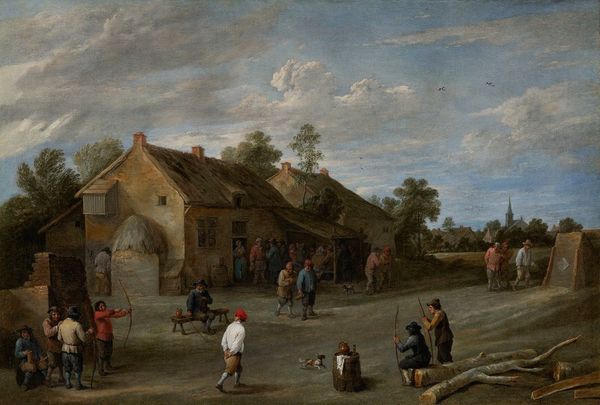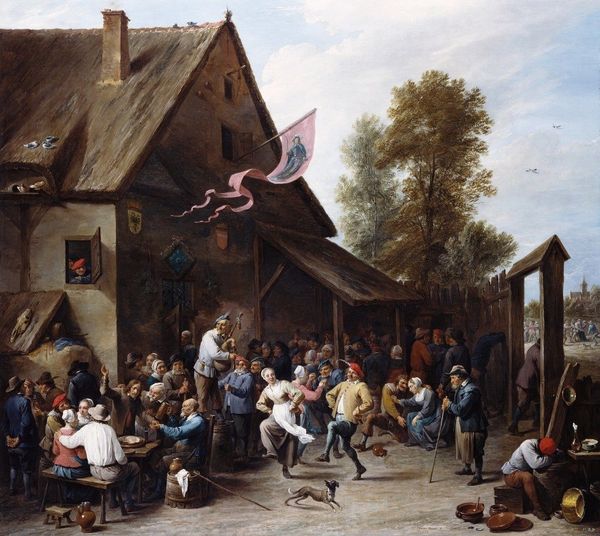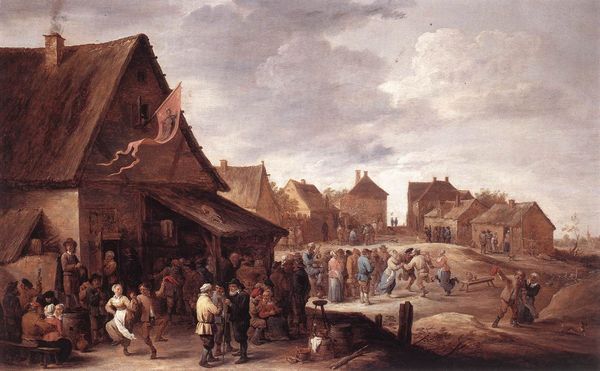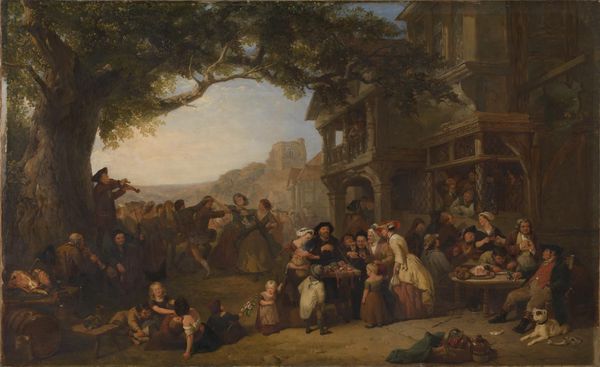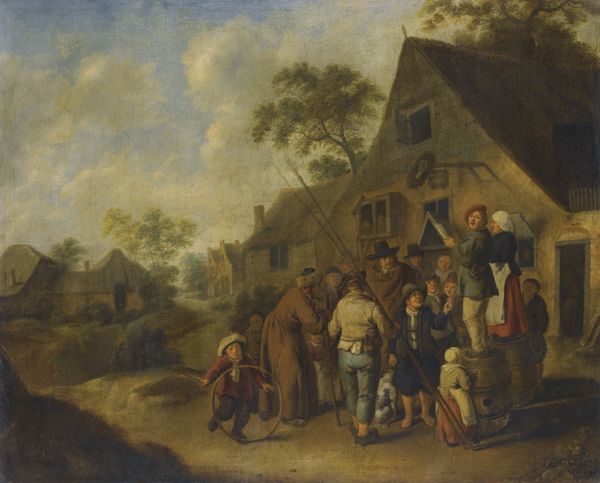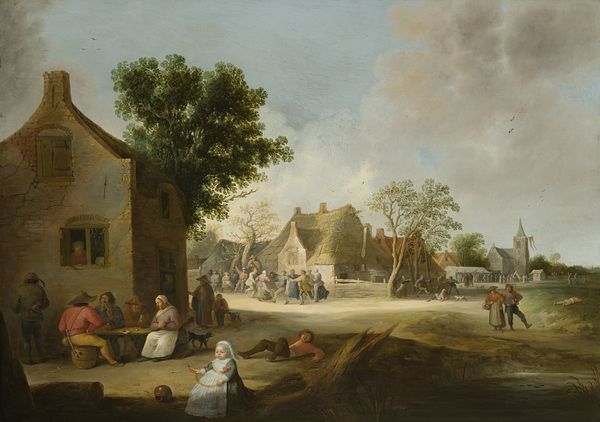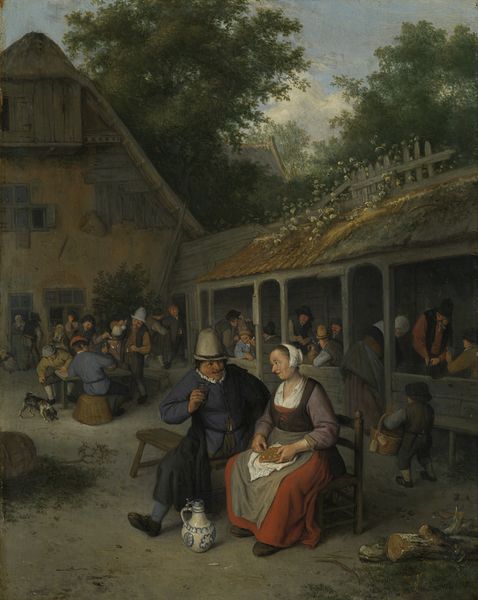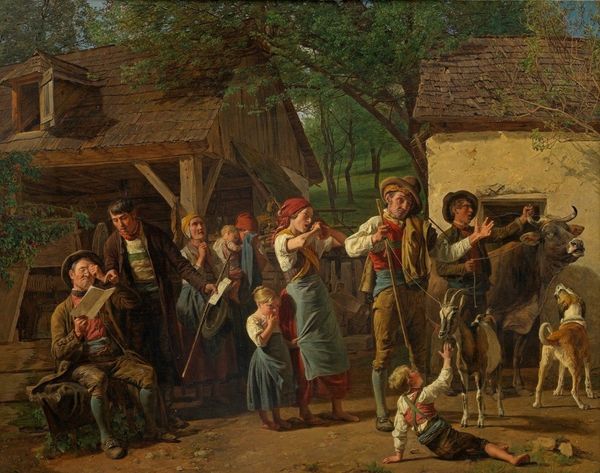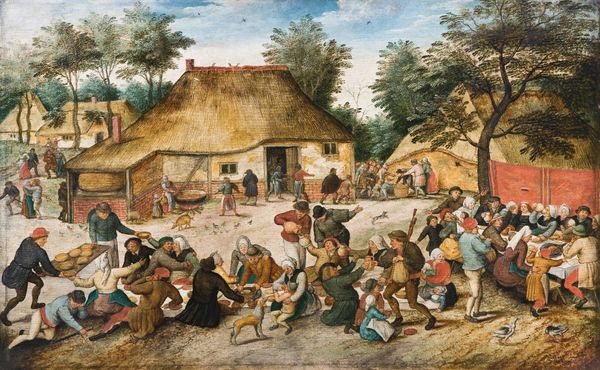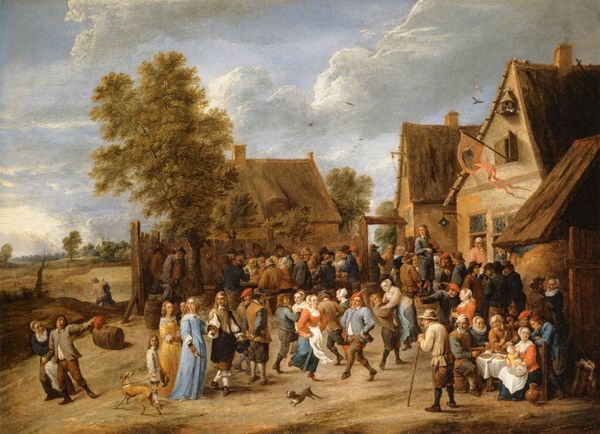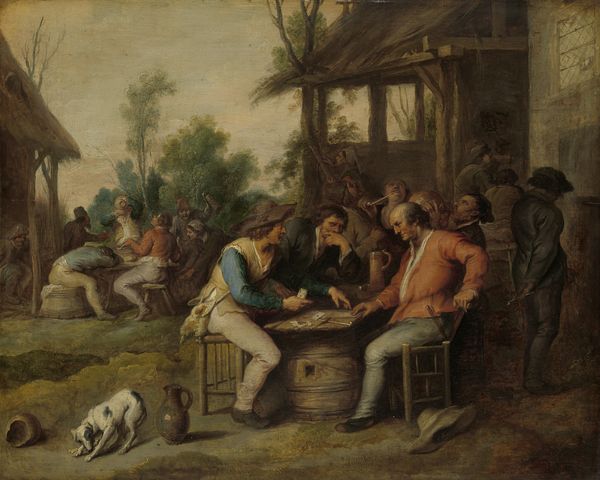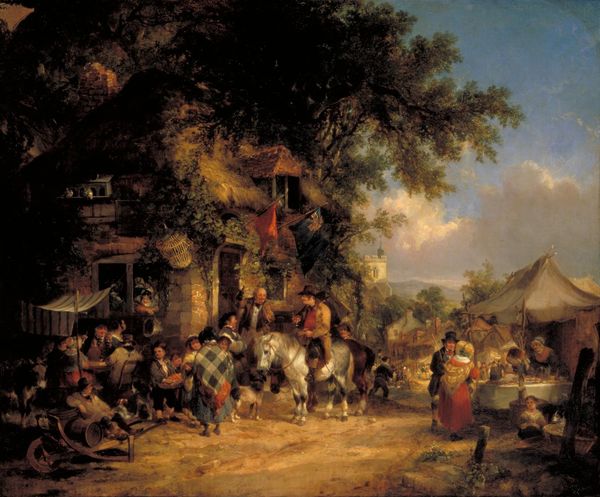
painting, oil-paint
#
figurative
#
baroque
#
painting
#
oil-paint
#
landscape
#
figuration
#
oil painting
#
genre-painting
Copyright: Public Domain: Artvee
Editor: Here we have David Teniers the Younger's "Peasant Kermis," from around 1665, rendered in oil on panel. It's bustling with activity and the details are incredible! There’s a real sense of community. How do you read this scene? Curator: I see the painting first as an object – oil paint carefully applied to wood. Teniers, and his workshop, understood the value of this skilled labor. These materials weren’t just available; they represented significant capital, not just financial but social and political. What kind of market forces would have allowed such kermis celebrations and leisure in art to flourish at this time? Editor: That’s a great point. I hadn’t thought about it in terms of resources. It’s easy to just see it as a snapshot of daily life, but you’re right; someone had to pay for the materials, the labor of the artist… Were these kermises frequent occurrences or were they special events? Curator: The interesting thing is that we now tend to view these “genre” paintings, such as this, as neutral records of daily life. Yet the labor to *make* the work says otherwise, elevating these quotidian gatherings to subjects worthy of display, investment and preservation. Consider the composition: does it challenge or reaffirm existing hierarchies? Where did the pigment for those rich earth tones come from? Who benefitted from that trade? Editor: So, the painting itself becomes evidence of the social structures of the time. The pigments and the support themselves are testament to trade routes and economic realities. That changes my perception entirely. Curator: Precisely! Understanding art means understanding the very *stuff* it's made of and what that material signifies within its historical moment. It gives an added layer of significance beyond just what is pictured. Editor: That’s given me a whole new way of looking at paintings. I’ll never see oil on panel the same way again! Curator: Nor will I. Each viewing provides new awareness.
Comments
rijksmuseum about 2 years ago
⋮
The peasants in Teniers’ kermis (country festival) scenes usually behave impeccably. They eat and drink, dance to bagpipe music, or just stand around chatting. The only false note in this merry scene is caused by drink; the man in the left foreground can no longer stand on his legs. The colours are bright and cheerful, with many white accents provided by the freshly laundered shirts and aprons.
Join the conversation
Join millions of artists and users on Artera today and experience the ultimate creative platform.
